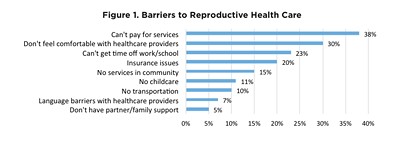Enough Providers for WHP Clients?
Lawmakers want to know what HHSC has planned
By Jordan Smith, 4:39PM, Tue. Apr. 24, 2012

How exactly would a new Texas Women's Health Program continue to serve more than 100,000 clients without the help of the Planned Parenthood, the state's largest provider of WHP services? That's among the questions that a group of Texas House lawmakers is still trying to get answered.
On April 24, a group of 28 lawmakers, led by Rep. Armando Walle, D-Houston, signed onto a letter to Health and Human Services Commissioner Thomas Suehs seeking a better explanation for how the state is going to be able to handle the nearly 50,000 existing WHP clients who will be forced to find a new provider if a new rule blocking PP clinics from participation in the program is allowed to stand. (PP has sued, claiming the new rule is unconstitutional. You can read a brief blog post about that here, and find more details in this week's print edition, on the street April 26.)
The lawmakers had already written to Suehs back in March, after Gov. Rick Perry announced that he'd ask HHSC to roll out a new state-backed WHP, after federal funding was pulled from the Medicaid-waiver program because the state's desire to exclude certain providers conflicts with long-standing federal law. In response, Suehs wrote that the agency had determined that even without the banned clinics in the mix, "96 percent of WHP clients would not have to travel farther than before and that no existing clients would have to travel more than 2.5 miles to find a new provider."
That, of course, doesn't exactly answer the question, when you consider that most of the existing WHP providers see fewer than 100 clients; in contrast, while PP made up just 2% of all WHP providers in 2010, it saw more than 40% of all WHP clients. According to HHSC data filed as part of the PP lawsuit, 25% of all providers saw just one client that year. In other words, living near a provider doesn't necessarily mean a client will be seen. (In part, the problem may be that the state's Medicaid reimbursement rates for the program were so low – less than $70 for a first-time client, less than $40 for a subsequent visit. Whether the state reimbursements would be any better is unclear. ) "[I]n failing to account for the ability and willingness of remaining providers to take on the 50,000 patients previously served by the recently excluded WHP providers, we believe these statistical claims are misleading," the lawmakers wrote today. "In fact, [Suehs' previous] letter did not address or acknowledge our initial concern that these factors were not accounted for in making these claims with regard to provider capacity and access to care" under any state-led WHP program. As such, the lawmakers have again asked for HHSC to address their provider availability concerns, as well as to be kept in the loop on how the agency proposes to fund its "new" WHP. "As these changes are current and ongoing, we ask that HHSC act quickly and aggressively to ensure that these women don't experience service interruptions," the lawmakers wrote.
You can find background on the WHP and the current controversy here and here.
Got something to say on the subject? Send a letter to the editor.
Read more of the Chronicle's decades of reproductive rights reporting here.
A note to readers: Bold and uncensored, The Austin Chronicle has been Austin’s independent news source for over 40 years, expressing the community’s political and environmental concerns and supporting its active cultural scene. Now more than ever, we need your support to continue supplying Austin with independent, free press. If real news is important to you, please consider making a donation of $5, $10 or whatever you can afford, to help keep our journalism on stands.
Mary Tuma, Jan. 25, 2018
Mary Tuma, March 25, 2015
Mary Tuma, June 29, 2020
Mary Tuma, May 12, 2015
May 22, 2014
Women's Health Program, Women's Health, Planned Parenthood, Abortion, Legislature, Family Planning, Reproductive Rights












